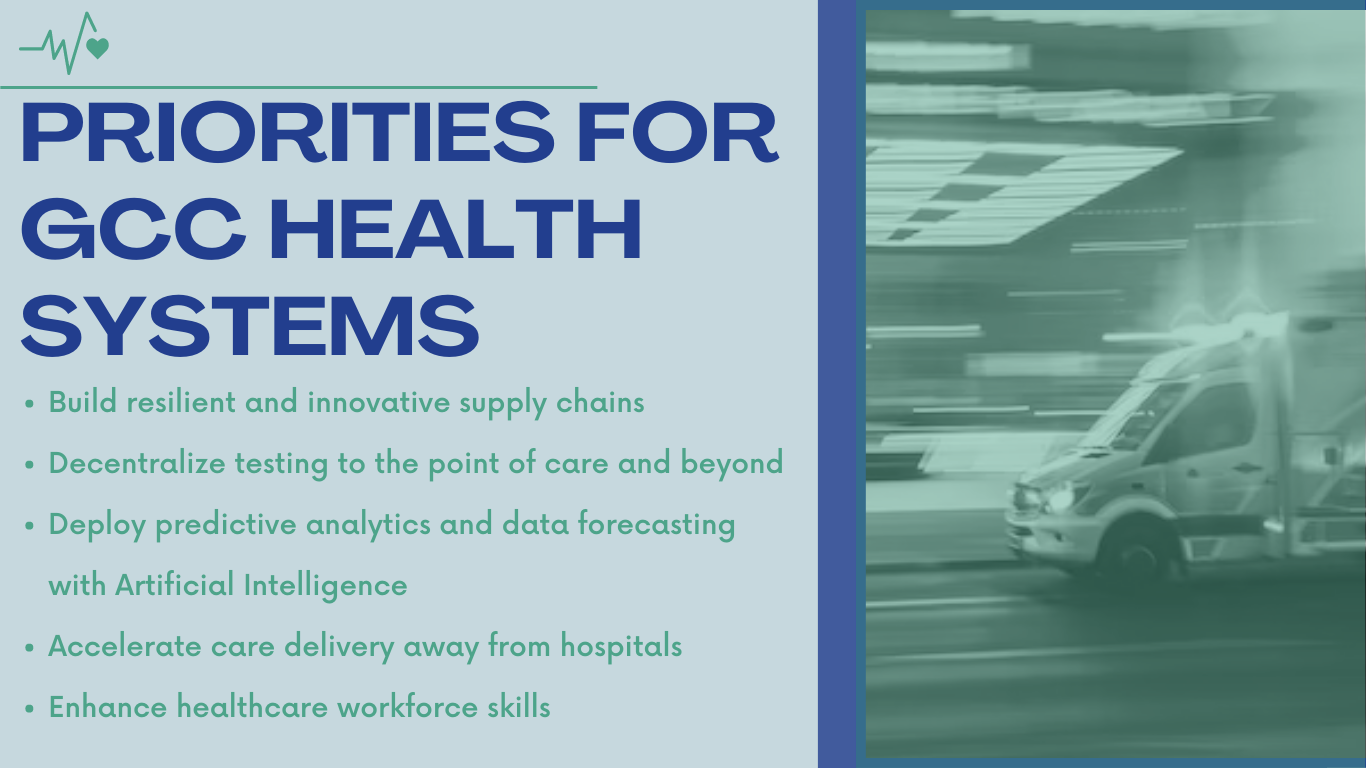
Build resilient and innovative supply chains
Given the difficulty of modelling projected demand, and understanding the necessary capacity, health authorities should build better scenario planning and demand forecasting capabilities. This can prevent future shortages of medicines, vaccines, testing kits, and equipment. Examples of advance planning can include repositioning and upgrading supply warehouses and their distribution systems and using drones. Health authorities will need to manage and meet surge demand from the public and healthcare providers—while safeguarding supply chain employees. Saudi Arabia’s centralisation of its Ministry of Health warehouses under the supervision of the National Unified Procurement Company, allows it to direct resources centrally and exploit its scale to meet demand in the whole country.
Countries should boost domestic manufacturing of critical products to counter shortages. National authorities can guarantee purchase agreements, offer fiscal incentives, and even provide state investment. They can reinforce emerging 3D printing capabilities in the region, potentially through increased funding for university-based research, to produce such items as respiratory valves and noncontact thermometers.
Decentralise testing to the point of care and beyond
Countries need a consistent and sustained approach to testing. Early efforts in many GCC countries, facilitated by the drive-through and public centres, have yielded many tests—including close to 1 million tests in the UAE alone. Countries should provide easy access to decentralised, more accurate testing, even in private homes. Health authorities should build the capability to collect, manage and analyse large volumes of samples frequently for multiple indications. Governments can achieve this by increasing substantially their testing capabilities, training a wider array of healthcare workers to support the public, and getting the public used to regular diagnostic testing.
Deploy predictive analytics and data forecasting with Artificial Intelligence
Countries should increase their use of the predictive analytics and data forecasting developed in response to COVID-19 to maintain heightened vigilance of this public health threat. Authorities should consider whether they need a minimum set of pandemic capabilities, including contact tracing tools. Countries can receive warning of emerging disease hotspots by using social media combined with online disease surveillance. In the region, such monitoring will provide insights into large cross border movements, including for religious tourism.
Artificial Intelligence has an important diagnostic role in identifying certain radiological patterns associated with COVID-19. This technology can play a larger role with more investment, greater access to datasets owned by different institutions, and a streamlined regulatory process
Accelerate care delivery away from hospitals
Health systems should continue to improve care provision outside the hospital setting. Before this crisis, hospitals and healthcare networks were steering more patients towards ambulatory and primary care as these are more cost-efficient and promote preventative care. They also save beds for more complex interventions. Simultaneously, public, and private payers are experimenting with payment models to incentivise physicians and patients to take this approach.
Authorities should continue to work with private and public providers to encourage the recent growth in telehealth. To accelerate this shift in care delivery from the hospital to patient’s home, authorities need to put in place the right enablers, such as data privacy, reimbursement policies, training, and remote care infrastructure. Telehealth should become part of the regular care package, which means that public and private payers should cover it.
Enhance healthcare workforce skills
COVID-19 has placed a significant strain on health systems and front-line professionals. In response, healthcare systems need to enlarge, strengthen, and reward this workforce. As part of this effort, there should be an emphasis on mental wellbeing, skills upgrading, and the use of technology. Such assistance can reduce burnout and safeguard longer-term productivity. Training in crisis management is particularly critical as the pandemic has revealed areas for improvement in clinical and administrative decision making. Meanwhile, non-clinical staff can be provided with the necessary tools and platforms to maintain productivity while working from home.
By taking these five sets of actions, public health authorities will have greater self-knowledge and a renewed sense of purpose, allowing them to better adapt to the new normal that will certainly emerge in the near future.